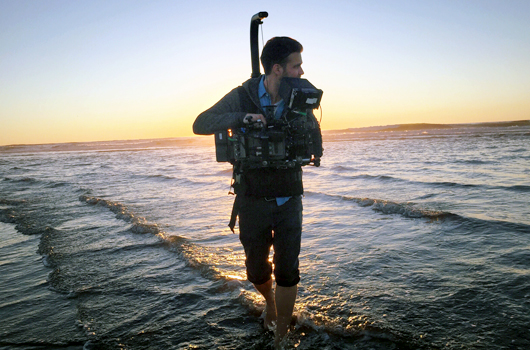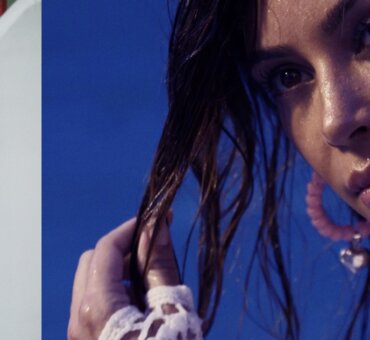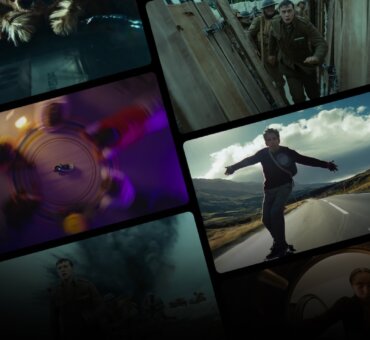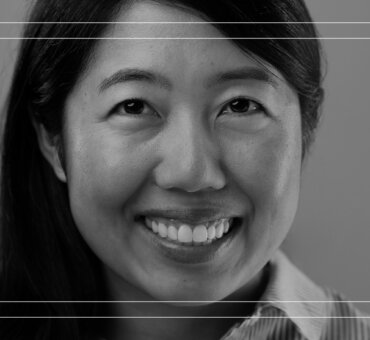Cinematographer Todd Martin is always scouting. Every exotic location he finds himself in, every perfect patch of forest — it’s all being logged on the off chance that such a place will one day come in handy. He was even scouting during this interview while riding a ferry to an island off of Maine. For Todd, scouting isn’t just some chore he does in an effort to prevent disasters on set. It’s an opportunity to make significant creative decisions. “A strong location can shape a moment,” he told us.
But, of course, finding strong locations is hard work. Very hard work. It’s a thankless job requiring dozens, if not hundreds, of hours, countless false leads, and painstaking attention to detail. And once you’ve finished a great scout, you haven’t actually created anything. You’ve only set yourself up for the possibility of creating something special later on. Maybe that’s why scouting is so often undervalued. And that’s too bad because it’s one of the most important disciplines a cinematographer can master.
We talked to Todd about his scouting methods on two projects, Where We Dwell and Duet.
With a project like Where We Dwell, where do you start scouting-wise?
It’s crazy that it’s been nearly three years since we set out to make that film; but to this day, it is still one of the most thorough scouts I’ve ever done. For that project, which was based on a poem, we had a very specific idea of what visuals we wanted to accompany each line. We probably watched every sports commercial ever made and pulled references for what imagery and locations would pair best with each scene. When it came time to scout, we knew we were looking for specifics. We knew we wanted diverse landscapes because we wanted to tell a story that captured the experience of being a young athlete — not just in the Northeast, where the photography took place, but across the country.
One of the first locations we scouted was a Midwestern-looking road for our hero runner — one that looked like it could go on forever. We knew this scene would bookend the film and accompany the final line of Arian’s poem, “forever we run,” so the vanishing point was imperative. The scout for that shot began on Google Maps. I’ve done a lot of scouting on Google Maps and Google Earth. I was looking for areas in upstate New York or Connecticut where I could see acres of farmland. Not a whole lot from my search turned out to be promising. But we did find a location in New Paltz, New York, where a road emerges from the town and continues straight for a few hundred meters before entering some tree canopy. It was long enough that if we framed it just right and used the vanishing point of the road, it would work. So we went to physically scout the road and looked closely at the sun’s path.When I scout, I use an app called Sun Seeker, which tracks the sun over the course of a day. You can view it as an overhead, or use your camera in an augmented reality mode to see exactly where the sun will be at a certain time of the day, at a certain time of year. You try to set yourself up as best you can, choosing a time where the sun is placed just right. On the initial scout for New Paltz, we noticed that summer sunrises presented us with something pretty magical, and we could only hope for the same conditions on the shoot day. To our luck, we woke up at 3 a.m., drove out to the road, and were welcomed by loads of morning mist — something that would otherwise require multiple, carefully placed IGEBAs (thermal foggers) to achieve. Visibility went on for a short throw before falling off into that mist. In the final shot, you see this road in the middle of Anywhere, USA, which is exactly what we’d envisioned.
There are a ton of locations in Where We Dwell. Did you scout each one of them in person?
We checked out about half of them in person, but the process was still very thorough. We had all of our options, and then we had backups and backups for those backups. We tried to pull together a lot of locations using our local resources, because I grew up in the Northeast and so did my co-directors, Anderson [Wright] and Evan [Metzold]. I reached out to family members in New Haven to try and gain access to a football stadium tunnel. Evan reached out to his coaches up in Massachusetts to get us access to a local high school stadium where we’d have full control of the stadium lights (which was essential to achieving our more contrasty climax look). We also knew we wanted a beach with palm trees, which certainly doesn’t exist naturally in the Northeast. So like some sort of miracle, Anderson recalled a beach near where he grew up in New Jersey, where a hotel plants palm trees every summer on the small stretch of beach they own in front of their property.For the pool location, we knew we wanted a tracking shot with a swimmer. We specifically wanted natural light, so we started our search looking solely for window-lit pools areas. This was a bit difficult to search online. So since we were already scouting dozens of schools, we made sure to look at the pool in each school we saw. A lot of pools have no windows — almost every one that we saw, in fact. It was at Hamden Hall’s Beckerman Athletic Center outside New Haven, which we were aiming to use for the scoreboard and locker room shots, that we found a gorgeous pool. There was a bank of windows along one side of the pool, and two large glass walls at the end. It had a lot of potential.I remember eagerly pulling out Sun Seeker and hoping the windows would be somewhat southern facing. Turns out, the room was perfectly articulated toward the southeast, where the sun would, according to Sun Seeker, rise through the large windows at the end of the pool and cast light down the room. With a physical scout like this, we knew we’d have a small window of time, so we made sure to arrive early with plenty of time to lay track, set up the dolly, and rehearse with the swimmers before the sun broke the horizon. We rehearsed repeatedly until we began to see a warm shaft of light cast down a single lane. It was perfect. It isolated our hero swimmer and would last for just 10 minutes before getting buried in the background. It’s magical to find a location like this; but even more so, to be able to figure out exactly when it looks best for the shot and capture the moment before it disappears.There is a feature in Google Maps that allows you to save or star locations, which I use all the time when I’m traveling. It actually came in handy when we were looking for the forest scene. We essentially wanted a frame with a lot of verticals so we could enhance the speed and energy of our runner, revealing her as if she were in a zoetrope. In reality, that translated to an evergreen forest full of trees with no branches on their lower half. Most forests in the Northeast are visually messy with loads of branches and shrubs covering the forest floor. Growing up, I would pass by this one patch of forest on the way to my aunt’s house that resembled something you’d find in Norway or the Pacific Northwest. I’d saved the location ages ago; and fortunately for this project, it was the perfect fit. I went back to my Google Maps and there it was.
As a cinematographer, what’s going through your head as you scout these locations?
For a project like Where We Dwell, a lot of it came down to where the sun was going to be. We had a small lighting package; but to achieve powerful looks at some of these large locations, we had to work with the great gaffer in the sky. We needed the location to do a lot of the heavy lifting as far as where light enters the space and how it carries. Of course, I’m thinking about lensing and framing within the space, but also how the location will frame our talent. What colors are present? What colors will our talent be wearing? How will the light read at different times of day? What time of day fits our story?
On the technical side, I’m looking for access to power. I’m looking at the house lights. Do they turn off individually, or is it an all-or-nothing situation? Most recently while I was filming Nzingha, I was in a location that was all or nothing, and I had to go around and unscrew about a hundred light bulbs. It took a while, but it was necessary to achieve the look. So it’s important to know those things ahead of time.I take a lot of pictures on a scout, but they’re not necessarily reference frames in my mind, like the ones that would be put into a production book for an agency. I like to take panoramas of the whole space so I can see what’s happening on a macro level, what’s going on outside and around the frame. It helps the gaffer and me when we’re discussing the lighting plan.
Is it possible to do a purely digital scout?
Yes. That’s what Anderson and I did on our shoot for Duet. It was an international job with a super tight budget, and we knew we wouldn’t be able to physically see any of these places until we landed and were ready to shoot. The project involved six different artists in six locations around the world. We wanted to diversify the experience of using the app by setting our artists in varying landscapes. The approach was different because we had to balance a search based on what artists we could source, as well as trying to build a cast that could take us to uniquely inspiring places across the globe. On Google Maps we dropped pins around the world. We went to Mexico, Japan, Norway, Fogo Island, New York, and San Francisco. All of the locations except New York were scouted digitally.We asked the artists for pictures of their homes in the hope of finding places that matched the aesthetic of the brand, and to see if any rooms would photograph especially well. Additionally, we’d go on Airbnb and scour tons of apartments to find something that fit. In Tokyo we found this really cool loft built in contemporary concrete design with floor-to-ceiling glass windows and accents of wood. It also happened to overlook the Toyko Tower, which made for a lovely contextualized backdrop while filming.
How many hours of scouting?
It’s hard to put a number on it, but at least a hundred hours between the two of us. We were looking for weeks. We had to be thorough because we knew that when we arrived at these places, we could easily waste the day if we didn’t know exactly what we were getting.
What are some lessons you’ve learned about scouting?
One thing I’ve realized is just how much you can achieve on a small-budget project with a good scout. In filming commercials, there are limitations on scheduling, so often you’re not able to shoot at every location at the most desirable time of day. There’s a lot of focus on the tech scout, and rightfully so, because a lot is learned when you have the whole team in the room and you’re talking through your day. Sometimes the locations are scouted and chosen without the director or the DP involved. This presents a unique problem where we find ourselves on a tech scout trying to figure out expensive solutions to make a location look its best or like it did naturally a few hours before we’re able to shoot there. It’s tough to speak so generally about this because there are so many factors. And ultimately, if you’re relying on the sun, there’s a solid chance it’s not gonna hang around for the amount of time it’ll take you to shoot the scene, not to mention the fact that you can’t predict the weather.
Are you always scouting?
Absolutely. I’m always observing. It sounds strange but I’m often thinking about light. I’m often saving locations in my maps. Who knows if I’ll ever go back there? I saw a soccer field on a cliff in Portugal recently. It was this dirt pitch set next to a lighthouse at the edge of Europe. It had such a unique tone and vibe, so I snapped a picture and dropped a pin. I’m always on the lookout for places like that. It’s tough because it can be easy to forget where you’ve been when every day is another adventure. You’ve gotta keep up. I’ve made it a habit to save locations. You never know when they will come in handy. A strong location can shape a moment, contextualize a story and at the right time of day, it will set the tone.
You can license footage from ‘Where We Dwell’, and other projects by Todd Martin here.






